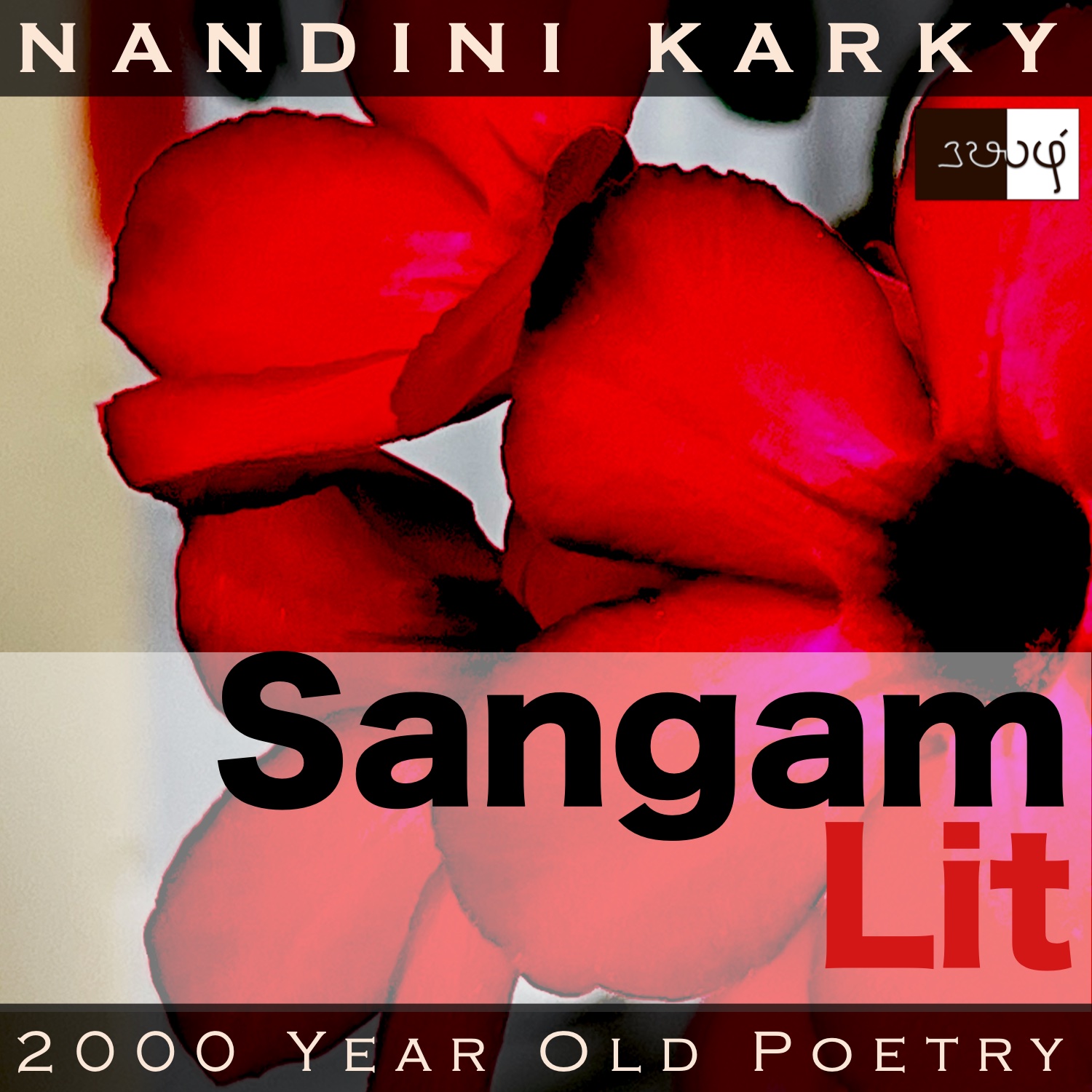Podcast: Play in new window | Download
Subscribe: Apple Podcasts | Spotify | Amazon Music | Android | iHeartRadio | TuneIn | RSS | More

In this episode, we relish the intimate web between flowers, seasons and emotions, as portrayed in Sangam Literary work, Kurunthogai 254, penned by Paarkaappaanaar. The verse is situated in the drylands of ‘Paalai’ and speaks in the voice of the lady to the confidante, in response to the confidante’s consolation that the man would return as promised.
இலை இல் அம் சினை இன வண்டு ஆர்ப்ப,
முலை ஏர் மென் முகை அவிழ்ந்த கோங்கின்
தலை அலர் வந்தன; வாரா-தோழி!-
துயில் இன் கங்குல் துயில் அவர் மறந்தனர்;
பயில் நறுங் கதுப்பின் பாயலும் உள்ளார்-
”செய்பொருள் தரல் நசைஇச் சென்றோர்
எய்தினரால்” என, வரூஉம் தூதே.
‘The season changes and yet, no news from him’ laments a voice in this verse. The opening words ‘இலை இல் அம் சினை’ meaning ‘a picturesque branch on which there are no leaves’ indicates the deciduous nature of a tree. In ‘முலை ஏர் மென் முகை’ meaning ‘a soft bud akin to a bosom’, we see instance of a simile connecting a part of the human body to that of a plant. The tree in question becomes clear to us in ‘கோங்கின் தலை அலர்’ referring to ‘the first flowers of the red silk-cotton tree’. ‘துயில் இன் கங்குல்’ talks about ‘the sweet night’s sleep’ and its rhythmic counterpart ‘பயில் நறுங் கதுப்பு’ refers to ‘familiar fragrant tresses’. Ending with the words ‘வரூஉம் தூதே’ meaning ‘the messengers that arrive’, the verse welcomes us to learn more.
Blooming first flowers and fragrant tresses seem to sing a song of yearning. The context reveals that the man and lady were leading a happy, married life when the man parted away to gather wealth. Before he parts away, the man promises to return before the start of a specific season. Meanwhile, seeing the lady languishing, the confidante consoles her by saying that the man would return soon. To the confidante, the lady says, “On the beautiful branch of the ‘kongum’ tree, bereft of leaves, a swarm of bees buzz around buds, which are akin to a soft bosom, now that the tree’s first flowers had blossomed. They come not, my friend! That sweet sleep at night, he has forgotten; About my fragrant tresses he’s been intimate with and slept on as his mat, he thinks not. Those messengers, who announce, ‘He who left with a desire to bring back wealth is about to arrive’, come not!” With these words, the lady expresses her anguish to her confidante, pointing out how the man had not returned as he promised.
All we heard was the description of a tree flowering! Wonder how that could cause so much pain to the lady? Let’s explore by listening to her words closely. The lady starts by zooming on to a tree that stands without any leaves on its branches, and yet bees swarm all over it. Then, she zooms closer to point to the buds of this red silk-cotton tree, also known as the ‘kapok’ tree in Southeast Asia, that are starting to blossom. An expert in plant biology, the lady tells us these are the first flowers of the season, and completes the description by equating the beauty of those flowers to the beauty of a woman’s breast. Immediately after saying the flowers have blossomed, the lady tells her confidante that something that she was expecting had come not. Instead of telling us what that is, the lady goes on to talk about how her man has forgotten the sweet sleep he shared with her and her fragrant tresses on which he used to lay, as if it were a mat. Finally, she concludes by revealing the thing that comes not to be the message that the man who went in search of wealth was on his way back to her.
Even today, when a beloved leaves to another city or country, and there is no phone call or message from them, the newly married or the new-in-love would feel a pang and a voice in the mind might ask ‘Forgotten, am I?’. It’s this timeless worry that echoes in this Sangam lady’s mind. The other fascinating thing is how the first flowers of a particular tree is the calendar date for the man’s return. The red silk-cotton tree’s flowers bloom in spring, even before the leaves that dropped in winter return to the branches, so that the bees and bats that pollinate the tree can do their work unhindered by the leaves. This event in nature marks the beginning of spring in the minds of Sangam people and in the lady’s case, this was the time marked by the man for his return. And so, that exquisite sight of first flowers shooting out from the red silk-cotton tree becomes a source of pain for the lady for there seems to be no news of her man’s return. Hope that expression of inner grief brought relief to her. Once again, the Sangam verses seem to say, ‘when in sadness, find a friend and pour your heart out’!




Share your thoughts...